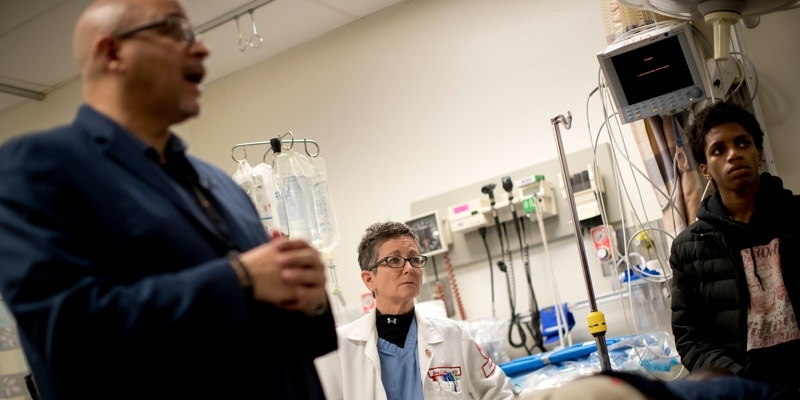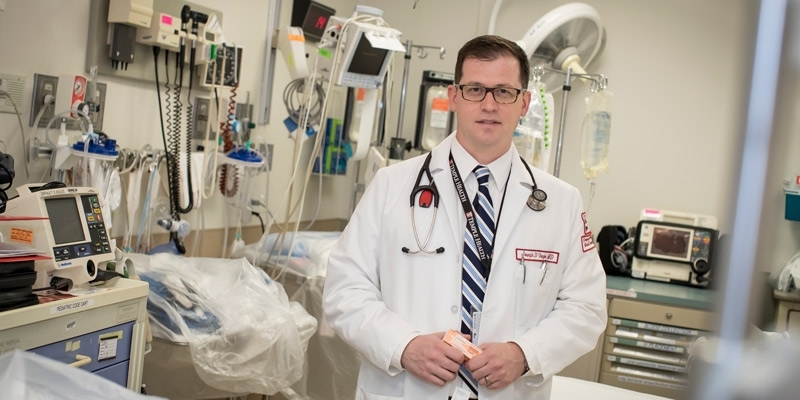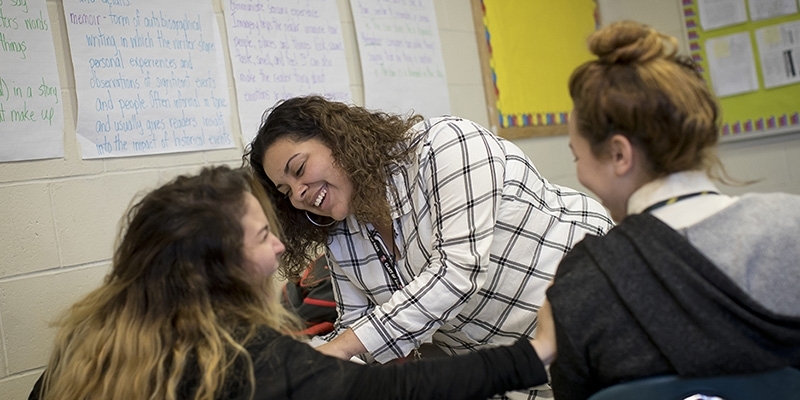Bullet proof
For more than a decade, Temple University Hospital’s Amy Goldberg and Scott Charles have been teaching about the realities of gun violence.
Trauma surgeon Amy Goldberg knew early in her career that the treatment for gun violence existed beyond hospital walls. A teenage boy whose life she saved in the early 1990s made her see that prevention was a necessity.
When Goldberg met him for a follow-up appointment in a Baltimore trauma clinic during her fellowship, she learned that at 16 he had already dropped out of school.
“It occurred to me that I may not have really made as much of an impact on this patient as I thought I had—that I had actually sent him back to the community that had gotten him shot to begin with,” recalls Goldberg, chair of the Department of Surgery at the Lewis Katz School of Medicine.
She knew then that she would never pass up the chance to do more to stop the crush of gun violence that plagues cities like Philadelphia, where a person is shot about every seven hours. More than two decades later, Goldberg keeps that commitment by helping to run Cradle to Grave, Temple University Hospital’s gun-violence education program.
Goldberg met her chance to do more in 2004: Scott Charles was working on a project at the time with eighth graders who wanted to know why their relatives, friends, classmates and neighbors kept dying in shootings. Charles brought his students to Temple University Hospital to meet Goldberg and get an inside look at what really happens when someone is shot.
During that lesson, Cradle to Grave was born. Charles soon joined the staff at Temple Hospital as trauma outreach coordinator, and he and Goldberg officially launched the program in 2006. Since then, they have educated more than 11,000 people—primarily at-risk youth who live in Philadelphia neighborhoods plagued by violence.
“Part of the mission of Cradle to Grave is just to slow everything down and take a moment, and to evaluate not only what they [the participants] have to lose, but what the person on the other side of gun that they might be pointing the gun at has to lose,” Charles says.
Charles and Goldberg are a natural team, but they found their passion for gun violence prevention in drastically different ways. Charles’ first experiences with guns—and the devastation they can cause—came in childhood: He was 2 when his older brother was shot to death, 9 when his sister killed herself using a firearm and first carried a gun at 14.
As a young doctor, Goldberg’s love of anatomy drew her to trauma—and with that came victims of gun violence.
“I don’t know that you could bring two people together that had such different backgrounds where, in truth, there’s so much overlap,” Charles says. “One of the things that I think we share is this desire to make things better despite all the evidence that would suggest that that’s impossible.”
Without Charles and Cradle to Grave, Goldberg says she would be a frustrated trauma surgeon.
“Even though I still get frustrated, I at least know that we are doing something about it,” she says. “We are getting off the sidelines and really trying to make a difference in the community.”


